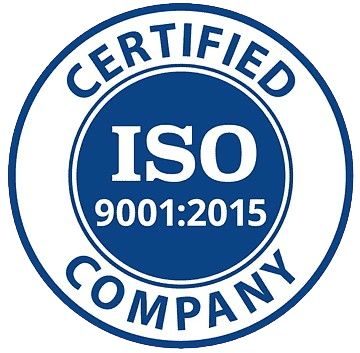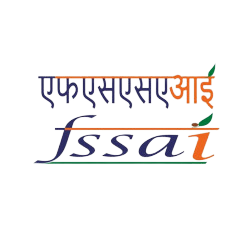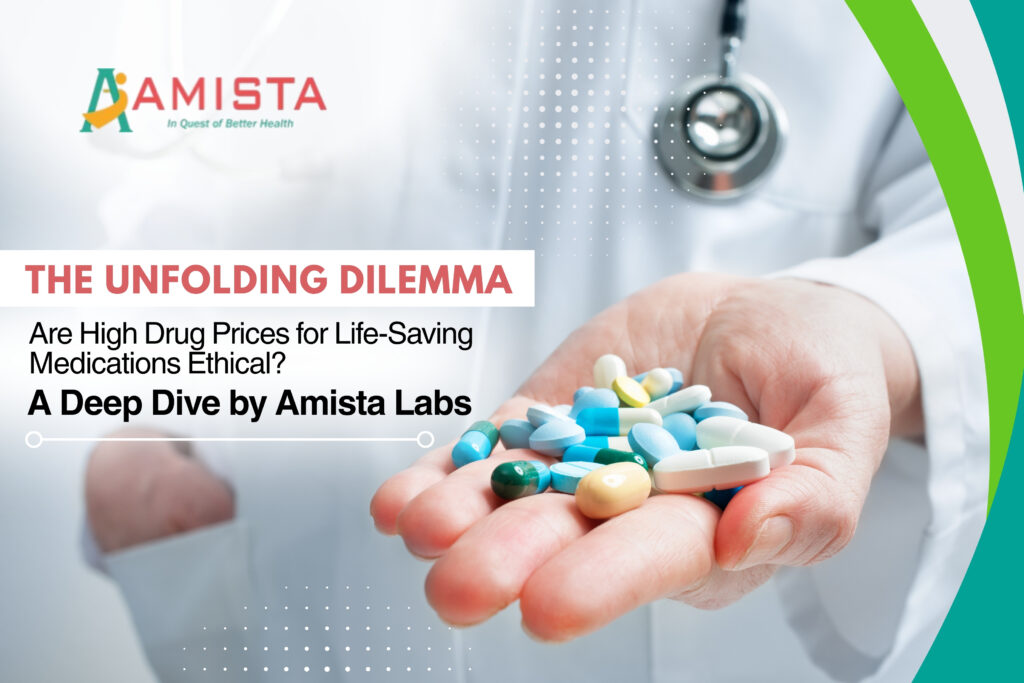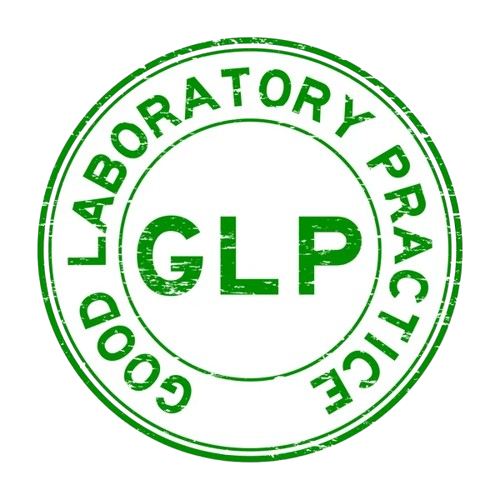At the PCD pharma franchise of Amista Labs, our core identity is shaped by the relentless pursuit of scientific breakthroughs that aim to improve human health and transform lives. Our laboratories are vibrant hubs of discovery, where dedicated scientists strive daily to unravel the mysteries of disease and forge new paths to wellness. Yet, our commitment extends beyond the test tube and microscope. It compels us to engage deeply with the intricate and often contentious issues that shape the broader healthcare ecosystem, none more pressing than the debate surrounding the pricing of life-saving medications.
The question is stark: Is it truly ethical for pharmaceutical companies to charge high prices for drugs that save lives? This isn’t merely an academic exercise; it’s a profound moral and economic dilemma that touches millions of individuals and families globally, forcing impossible choices and highlighting deep inequities within and across societies. Let’s unpack the multifaceted arguments, explore the underlying complexities, and consider potential pathways toward a more balanced and just future.
The Unavoidable Costs of Discovery: Why Drug Development Demands Such Vast Investment
To truly understand the industry’s perspective on high drug costs, we must first grasp the monumental undertaking that is drug development. It’s a journey fraught with immense financial risk, extensive time commitments, and a staggering rate of failure.
- The Labyrinthine Path of R&D: Imagine a marathon that lasts over a decade, costs billions, and where only a tiny fraction of runners even cross the finish line. That’s essentially the pharmaceutical R&D pipeline. From initial concept to market, a new drug typically takes 10 to 15 years to develop. This lengthy timeline involves multiple, resource-intensive stages:
- Basic Research and Target Identification: Years are spent understanding disease mechanisms and identifying potential molecular targets. This foundational work often happens in academic institutions or early-stage biotech firms, but its translation into a drug candidate requires significant private sector investment.
- Drug Discovery and Preclinical Testing: Thousands of compounds might be screened to find a handful with therapeutic potential. These are then rigorously tested in laboratory and animal models to assess safety and efficacy before human trials. This phase alone can cost hundreds of millions of dollars.
- Clinical Trials (Phases I, II, III): This is the most expensive and time-consuming stage. Phase I tests safety in a small group of healthy volunteers. Phase II evaluates efficacy and dose in a larger patient group. Phase III involves thousands of patients and compares the new drug to existing treatments or a placebo, gathering extensive data on effectiveness and side effects. Each phase is a significant financial gamble, and the vast majority of drugs (around 90%) fail at some point during clinical trials, often after substantial investment has already been made.
- The “Valley of Death” and Beyond: Beyond the sheer expense, there’s the concept of the “valley of death” – the critical early stage where promising research often stalls due to a lack of funding to bridge the gap between basic science and clinical application. Pharmaceutical companies are typically the ones with the deep pockets and long-term vision required to navigate this perilous terrain. The few successful drugs must not only recoup their development costs but also compensate for the myriad failures, forming a crucial financial ecosystem that fuels ongoing medical innovation.
- Navigating Regulatory Rigor: Bringing a drug to market isn’t just about science; it’s also about meticulous adherence to stringent regulatory standards set by bodies like the FDA (U.S. Food and Drug Administration), the European Medicines Agency (EMA), or India’s Central Drugs Standard Control Organisation (CDSCO). These processes are incredibly complex, requiring mountains of data, extensive documentation, and numerous meetings, all adding to the time and cost involved.
- Intellectual Property and Patent Protection: Once a drug is approved, it’s typically protected by patents for a limited period, often 20 years from the patent filing date. This exclusivity is a cornerstone of the current system, designed to allow companies to recoup their enormous R&D investment and generate profit. Without this period of market exclusivity, it’s argued, the incentive to undertake such risky and costly ventures would vanish, potentially stifling the flow of new life-saving medications.
From this industry perspective, high prices are not simply about maximizing profit; they’re framed as an essential mechanism for sustainable drug development, ensuring that the next generation of life-saving therapies can emerge from the pipeline.
The Ethical Imperative: Accessibility, Affordability, and the Right to Health
While the economic realities of drug development are undeniably complex, they stand in stark contrast to the fundamental ethical imperative that life-saving medications should be accessible and affordable to all, irrespective of their financial standing. The human impact of prohibitive drug costs is profound and often tragic:
- The Crushing Burden of Inaccessibility: For millions globally, especially those in low and middle-income countries, high pharmaceutical pricing translates directly into a lack of access to essential treatments. This isn’t just an inconvenience; it can mean preventable suffering, disease progression, disability, and ultimately, premature death. When a treatment exists but remains out of reach, it creates a morally indefensible two-tiered healthcare system where health outcomes are dictated by economic privilege rather than medical need. This strikes at the very heart of healthcare equity.
- “Financial Toxicity” – A Silent Killer: Even in developed nations with robust insurance systems, high deductibles, co-pays, and out-of-pocket maximums for expensive life-saving medications can push families to the brink of financial ruin. Patients are forced to make agonizing choices: skip doses, delay treatment, forgo other necessities like food or housing, or face overwhelming medical debt and even bankruptcy. This “financial toxicity” can be as devastating to a patient’s well-being as the disease itself, undermining any benefit the drug might offer.
- The Moral Compass and Human Dignity: Many ethical frameworks assert that excessively profiting from human suffering, particularly when effective treatments exist, is morally reprehensible. When a drug’s affordability becomes a barrier to a person’s survival or quality of life, it raises fundamental questions about the role of commerce in public health. Is it acceptable for a company to prioritize shareholder value over the universal right to health? This tension often ignites public outrage and calls for greater corporate social responsibility within the pharmaceutical industry.
- Exacerbating Global Health Disparities: The impact of high medicine pricing is particularly acute in resource-limited settings. Without affordable access, treatable infectious diseases continue to devastate populations, and the rising tide of non-communicable diseases like cancer and diabetes places an unbearable strain on already fragile health systems. This perpetuates a cycle of ill-health and poverty, widening the chasm of global health inequality.
- The Ripple Effect on Public Health: Beyond individual patients, high drug costs can strain entire public health systems. Governments and insurers are forced to make difficult allocation decisions, potentially limiting access to other vital services or facing unsustainable budget deficits. This directly impacts overall public health and the ability to prepare for future health crises.
Forging a Path Forward: Towards Sustainable Innovation and Equitable Access
The debate surrounding pharmaceutical pricing isn’t about halting medical innovation or dismantling the industry. It’s about finding a delicate, sustainable equilibrium that encourages groundbreaking scientific discovery while upholding the fundamental human right to health and ensuring that life-saving medications are within reach for everyone who needs them. This complex challenge demands innovative, collaborative solutions from all stakeholders:
- Enhancing Transparency and Accountability:
- Opening the Books: Greater transparency from pharmaceutical companies regarding their actual R&D costs, manufacturing expenses, and marketing expenditures would be a crucial first step. This data, if independently verified, could help de-mystify prices and provide a basis for more informed public and policy discussions.
- Price Justification: Requiring companies to provide clear justifications for the prices of new life-saving medications, detailing the therapeutic value, comparative effectiveness, and unmet medical need addressed, could foster greater accountability.
- Exploring Innovative Pricing Models:
- Value-Based Pricing: This model ties the price of a drug to its demonstrated clinical benefit and real-world outcomes. If a drug performs exceptionally well, its price might be justified; if it offers only marginal improvement, the price should reflect that. This shifts the focus from simply developing a drug to delivering a tangible patient benefit.
- Tiered Pricing for Global Access: Implementing differentiated pricing strategies where the same drug is sold at varying prices in different countries, scaled to their economic capacity, could significantly improve patient access in lower-income nations without necessarily impacting revenue in wealthier markets.
- Subscription or “Netflix” Models: For certain high-cost drugs, particularly for infectious diseases, governments or healthcare systems could pay a fixed fee for unlimited access to a treatment for a population, removing the per-pill cost barrier.
- Outcome-Based Agreements: Payments to pharmaceutical companies could be linked to whether a drug achieves specific patient outcomes, sharing the financial risk.
- Strengthening Governmental and Regulatory Oversight:
- Empowering Price Negotiation: Governments, particularly those with large purchasing power (like India or the US, through agencies like Medicare), could actively negotiate drug costs directly with pharmaceutical companies. This is common practice in many European countries and has demonstrably led to lower prices.
- Streamlining Regulatory Pathways (Responsibly): While maintaining rigorous safety and efficacy standards, optimizing and speeding up regulatory review processes could reduce the time a drug spends in development, potentially lowering costs and accelerating patient access.
- Fostering Generic and Biosimilar Competition: Policies that encourage the timely entry of generic and biosimilar versions of drugs after patent expiry are critical. Competition is a powerful force for driving down prices and increasing drug affordability. Measures to prevent “pay-for-delay” schemes and other tactics that hinder generic entry are essential.
- Boosting Public and Collaborative Research Initiatives:
- Increased Public Funding for Basic Research: Greater public investment in foundational scientific research and early-stage drug development at universities and national institutes can de-risk the process for private companies, potentially leading to lower subsequent prices for the licensed discoveries.
- Open Science and Data Sharing: Promoting collaborative research models and open sharing of non-proprietary data can accelerate discovery, reduce duplication of effort, and potentially lower overall R&D costs across the industry.
- Pushing for Drug Development for Neglected Diseases: Public-private partnerships are crucial for developing drugs for diseases that primarily affect poorer populations, where market incentives have historically been Flow.
- Re-evaluating Intellectual Property Laws:
- While patents are crucial for incentivizing medical innovation, discussions around potential reforms, such as shorter patent terms for certain life-saving medications or compulsory licensing in public health emergencies, could be explored to balance innovation with access.
- Empowering Patient Advocacy and Education:
- Strong patient advocacy groups play a crucial role in raising awareness about drug affordability challenges and lobbying for policy changes. Educating the public about the complexities of pharmaceutical pricing fosters a more informed societal dialogue.
Amista Labs: Committed to Innovation with Conscience
At Amista Labs, we firmly believe that true progress in healthcare encompasses both the extraordinary medical innovation born from rigorous science and the profound responsibility to ensure that these advancements reach everyone who needs them. Our dedication to drug research and drug development is intrinsically linked to our commitment to healthcare equity. We strive to be a part of the solution, fostering a future where revolutionary life-saving medications are not just scientific marvels but accessible realities for all.
We actively participate in discussions surrounding ethical pharmaceuticals and medicine pricing, seeking to understand the intricate interplay of scientific advancement, economic realities, and societal well-being. Our vision is a world where health is not a privilege, but a fundamental right, supported by sustainable practices that incentivize discovery while safeguarding public health.
So, are high drug costs for life-saving medications ethical? There’s no single, universally accepted answer, as the ethical landscape is continuously shaped by evolving societal values and scientific progress. However, the pressing need to balance the imperative for medical innovation with the undeniable human right to affordable patient access remains paramount. It’s a continuous challenge, but one that Amista Labs is determined to address for the health and well-being of humanity.
Join the Conversation: The debate on pharmaceutical pricing affects us all. What are your thoughts on balancing medical innovation with drug affordability? Share your perspective in the comments below, and let’s work together towards a more equitable healthcare future.









